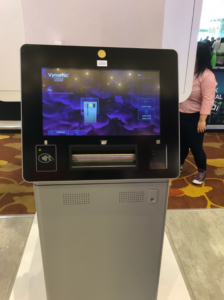US-based automatic teller machine (ATM) manufacturer Diebold Nixdorf, Inc. is gradually evolving into a maker of omnichannel-connected banking and has created a new service leveraging the Internet-of-Thing (IoT).
The new offering promises to help financial institutions and retailers keep up with digitalization and market changes in physical channels.
The Ohio-based firm has rolled out Diebold Nixdorf AllConnect Services, which uses data captured through an advanced IoT infrastructure to analyze the performance and output of ATMs, payment terminals and mobile devices, the company said in a release.
Diebold Nixdorf AllConnect Services also powers a collection of integrated business solutions including managed mobility services, branch and store lifecycle management, its ATM-as-a-service offering, and financial and retail total implementation services.
“Diebold Nixdorf AllConnect Services leverages our broad knowledge of global markets, awareness of industry shifts and a consumer-centric view of what our clients need in order to accelerate their business transformation,” said Olaf Heyden, senior vice president, services at Diebold Nixdorf. “The underlying foundation of our services infrastructure will always consist of the most dedicated people providing industry-leading integrated solutions.”
 The launch of AllConnect Services follows the release of Vynamic, a software suite built to power the ongoing transformation in the retail and financial services industry. Launched last year, Vynamic integrates solutions spanning mobile devices, branches, ATMs, kiosks, point of sale (POS) terminals and store. With a shared data analytics and transaction engine, the Vynamic platform can generate new insights to enhance operations across all the different channels.
The launch of AllConnect Services follows the release of Vynamic, a software suite built to power the ongoing transformation in the retail and financial services industry. Launched last year, Vynamic integrates solutions spanning mobile devices, branches, ATMs, kiosks, point of sale (POS) terminals and store. With a shared data analytics and transaction engine, the Vynamic platform can generate new insights to enhance operations across all the different channels.
Diebold Nixdorf joins several others in the financial services industry that are betting on the emerging cardless ATM and mobile transaction trends.
For many experts and industry observers, cardless ATMs are about to become mainstream and this major shift is likely to have a big impact on the banking industry.
Despite the emergence of digital wallet services such as Apple Pay and Google Wallet, there is still a long way to go before the economy becomes completely cashless. At the same time, an increasing number of people don’t want to use cards, but yet, these still need to have access to cash.
Thousands of Cardless ATMs
One of the benefits of cardless ATMs is that customers don’t have to worry about losing their cards or forgetting their PIN. Moreover, Cardless ATMs also offer protection against stolen wallets.
Banks such as Commonwealth Bank in Australia has already implemented cardless ATMs, and Wells Fargo just recently rolled out the One-Time Access Code technology in its network of 13,000 ATMs in the US, which enables customers to authenticate and withdraw cash at an ATM using the Wells Fargo mobile app and without the need of a physical card.
“Mobile continues to be the channel of choice for millions of our customers, so it only makes sense to leverage it for new, convenient ATM experiences,” said Adam Vancini, head of operations for Virtual Channels. “Whether a customer happens to have a card on them or not, One-Time Access Code provides another simple and secure way to withdraw cash at any of our ATMs.”
But for Douglas Hartung, senior director of global software innovation at Diebold Nixdorf, the rise of cardless ATMs is just one of the many signs that banking and commerce is entering a new era where cutting-edge technologies are allowing for a more seamless, integrated buying experience.
In a recent interview with Global Banking and Finance, Hartung said that the industry is quickly moving beyond omnichannel, where banks and retailers focus on delivering a great customer experience regardless of whether it be in-store, online or mobile, to “connected commerce” where silos between banks and retailers are broken down to enable real-time visibility and integration across every consumer touchpoint.
“While consumers interact with brands, what they really want are great experiences,” Hartung said.
“As the IoT and machine-to-machine (M2M) landscapes continue to expand, open banking systems that connect your financial world with other aspects of your life are essential to delivering these experiences. To address the challenges and compete effectively, both banks and retailers must collaborate. It is critical that they draw on their respective strengths within the opening banking infrastructure to deliver a customer experience that is personal, seamless and secure.”
Featured image: SaimonSailent, Shutterstock.com.








